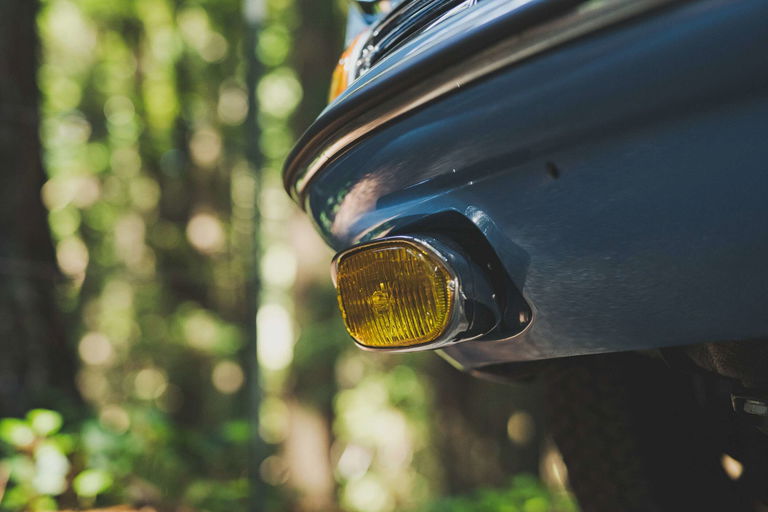Only Porsche’s second all-new street car, the 911 was quite a bit more sophisticated than the 356. It had six cylinder and overhead cams for the first time (aside from the Carrera racing engine), paired with a 5-speed dogleg gearbox, pushing the car away somewhat from the little car that could position in the sports car market. As the decades have passed, the 911 has grown enormously, both in terms of variants and in capability. The early cars are particularly sought after for their purity: both mechanical and cosmetic. Initially, there was just one car available: the 911. Available as a coupe only with no forced induction or other engine upgrades, and no transmission or driven wheel choices, you got an elemental sports car that was deceptively swift and rewarded the experienced and passionate sports car enthusiast.
Even in the early years of the 911’s life, it received significant updates virtually every year and by the end of the “long hood” in the 1973 model year, displacement and power had grown by more than 30 percent and the aesthetic had become more 70s than 60s.
This particular car is an early production example with a 300 series serial number, identifying it as one of the first few hundred 911s built. Completed in April of 1965, it was among the first 911s to come to the United States, with US car production having started in February of 1965. For this reason, it was used by Sports Car Graphic for their 911 road test, and was featured on the cover of their December 1965 issue, looking much as it does today, finished in sky blue with houndstooth fabric seat inserts and Hella 128 fog lamps. On the cover of the magazine, the car wears a black California plate number RQN 189, one of which survives with the car to this day. That magazine article was written by Jerry Titus, whose son eventually purchased this car as its 5th owner in August of 1998.
The car is a matching-numbers example which has known history from new having been supplied by Johnny von Neumann’s dealer Competition Motors in Culver City, California to its first owner, who took tourist delivery of the car on the 6th of August 1965 at Zuffenhausen. The car’s first owner retained it only for 8,000 miles, trading it in on a Mercedes-Benz at Palmer Motors in Long Beach, complaining that he couldn’t drive the car to its full potential in the US as he had in Germany. The car’s second owner was an employee of Douglas Aircraft and bought it in June of 1966 from Palmer Motors, retaining it for nearly 30 years.
By 1999, the car belonged to noted collector John Clinard, who had the car carefully restored with engine and gearbox rebuilt by Randy and Chuck Beck. The paint and bodywork were done by GTA Metalworks in Santa Ana, and the pepita seat inserts were supplied by Alois Ruf.
Today, the car is in excellent mechanical and cosmetic condition, with only light aging and wear since the restoration. It is presented authentically, with correct 4.5 inch steel chrome wheels wearing Michelin XZX tires, fog lamps (now with yellow lenses, but the original white ones are included), wood-rimmed steering wheel, twin triple throat Solex carburetors, and Blaupunkt Frankfurt radio. The front overriders are included but not currently installed, but the car looks otherwise very much as it would have when it was new. Also included is a Porsche Certificate of Authenticity confirming that it is matching numbers.






























































































